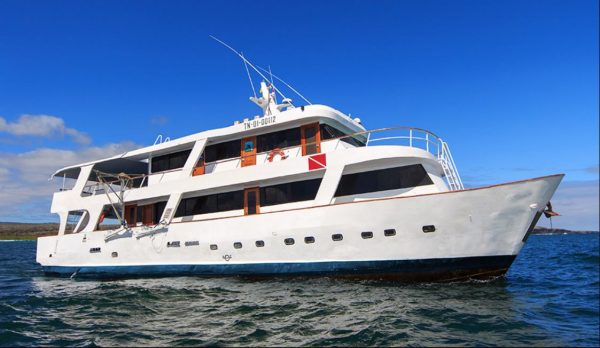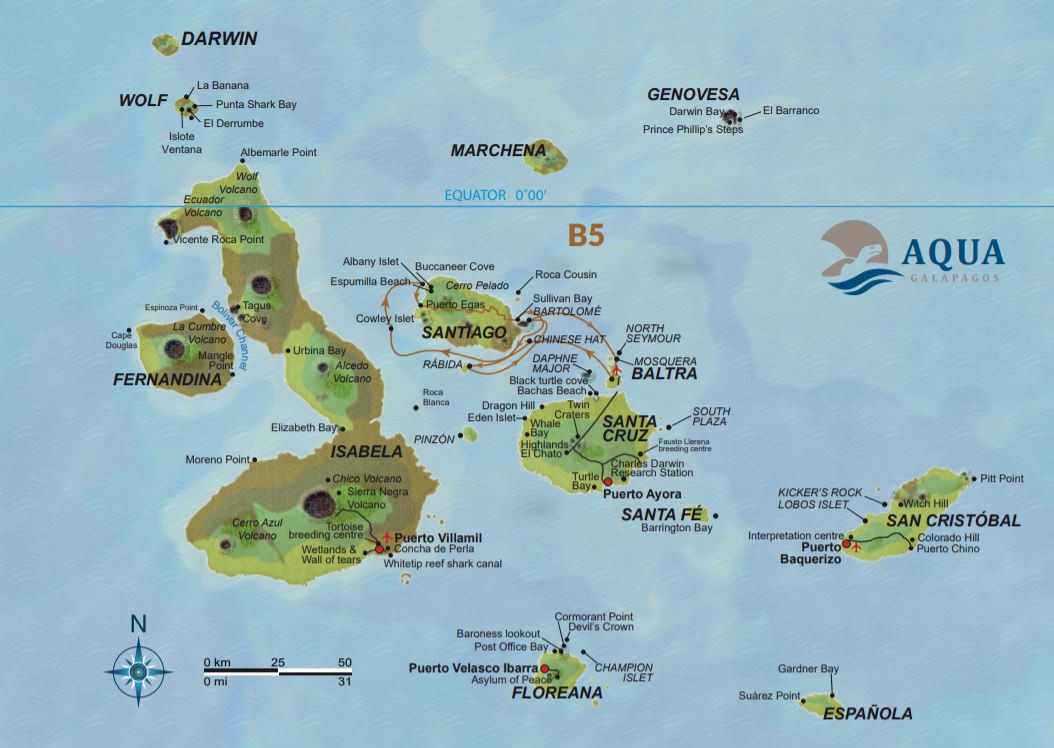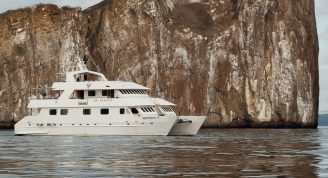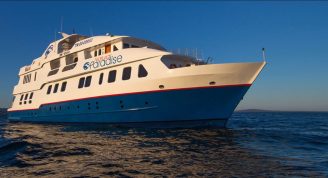Description
Five nights aboard M/Y Aqua will in no doubt provide you with the BEST memories! This route is known as “The Heart of the Archipelago”- discover uniquely shaped Chinese Hat, extraordinary wildlife above and under the waves at Cowley and Albany, and much more! This itinerary is sure to make your stay that of a lifetime!
Trip Name
Aqua Galapagos Naturalist 5 Day Cruise Itinerary B
Days
5
Overview
Vessel Type: Motor Yacht
Passenger Capacity: 16
Lenght: 26 m
Built: 1998 (Remodeled in 2019)
The Galapagos Aqua is the ideal boat for divers and adventure lovers of all ages! It offers a unique combination of both liveaboard diving safaris, including the best diving sites of the archipelago, as well as naturalist cruises for seeing what makes the islands themselves so special, something that should not be missed when visiting the Galapagos Islands.
Diving Equipment on board:
2 dive tank compressors: Enriched air and Nitrox, Aluminum 12L scuba tanks with valves, belts and weights, Full personal diving equipment available for rent (BCD, regulator, mask, fins, 7mm wetsuits, hoods, gloves, boots, dive computer, torch, GoPro underwater camera), Diving Safety Equipment provided on board for free: Personal Marine rescue GPS, Storm whistle, Diving beacon, Surface marker tube. Aqua’s Dive related Certifications:Certified with PADI, DAN, EFR.
Social Aeas:
Sun deck: Solarium area, shaded relaxing area
Upper deck: Shaded outside deck
Main Deck: Dive Platform
Amenities: TV, DVD, laptop, beamer, deck chairs











